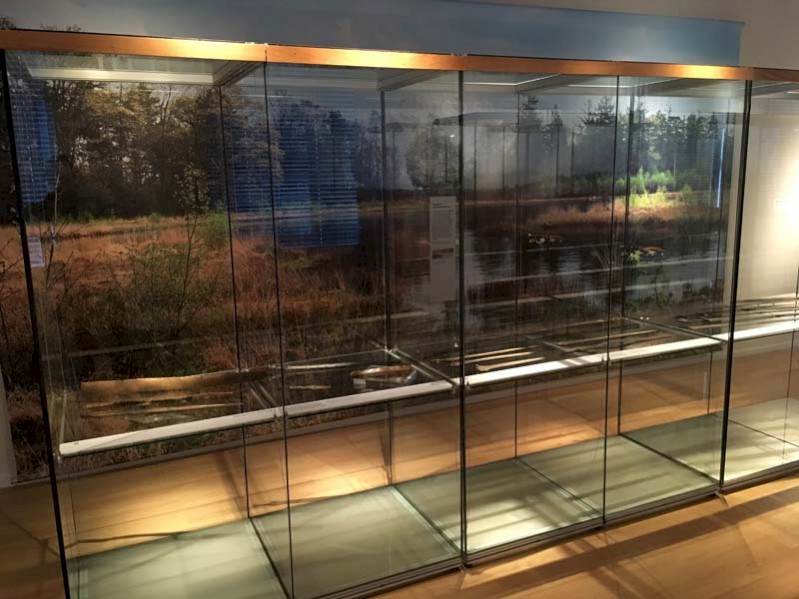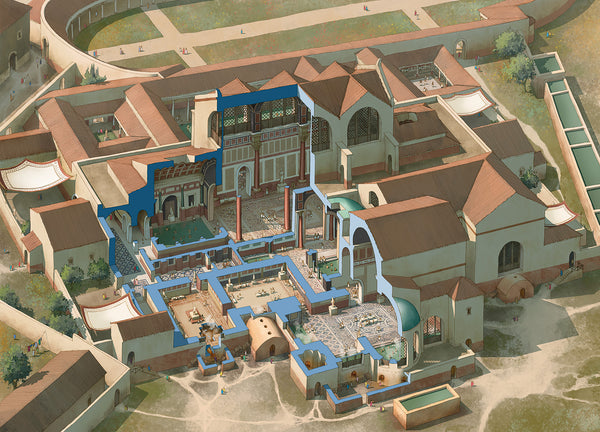Swords in Leiden
If you’ve been following my blog posts for a while, it shouldn’t come as much of a surprise that I’ve been rather critical of the ways in which archaeological museums tend to present their collections. I’ve written about the purpose of an archaeological museum on the Ancient History Magazine blog and also wrote two blog posts (at the time of writing this) about it on my personal website.
While I’ve been critical towards the National Museum of Antiquities in Leiden, I should say that I have enjoyed the three recent temporary exhibitions. They deal with death in ancient Egypt, the Romans along the coasts of the Low Countries, and swords. These exhibitions are all relatively small and each deal with a very particular subject.
You can almost consider them as little visual essays. While still fairly descriptive, the topics are narrowly enough defined that you really get the sense of delving into a particular subject. Each of the three is well worth a visit, but since this is Ancient Warfare, I’ll focus on the one dealing with swords for this blog post.
The exhibition, called Cutting-Edge History, features around 200 swords from a number of different museums, with the bulk coming from the National Museum of Antiquities itself. The specimens range in date from the Bronze Age to the modern era. Geographically, the swords shown come from all over the world, such as this sword from the Philippines made from a swordfish’s beak:

Most of the swords nevertheless do seem to come from Europe and the Mediterranean, including some very nice examples of Roman gladii. On its website, the museum itself highlights the prehistoric sword of the Chieftain of Oss and a gilded medieval sword from Dorestad (both sites in the Netherlands).
The interesting thing about this exhibit is that it’s more than just a collection of things. Some displays focus on particular aspects of swords: how they were used, how they were made, and even where they were found. For example, a display case with a collection of long swords has a text that explains that these double-edged weapons were probably used for cutting rather than thrusting.

There is also a display – pictured above – showcasing weapons that were found deposited in lakes and streams, with a large photo of a wetland area behind the display cases. On the other side of the room are more display cases with a picture of a field behind them to represent swords discovered in the soil. These are small touches, but they reveal something about where these weapons had been desposited in the past. These displays also include texts about the ritual killing of swords (for example, by bending the blade) prior to deposition.
In fact, the area where these displays are located also features a sign hanging from the ceiling. The title can be translated as ‘Given away’ and the body of the text, translated from the Dutch, reads:
A sword is an object to which power and personality are ascribed and that represents the bearer. This personal and inalienable aspect [of swords] is demonstrated by the archaeological context in which swords are found. Many were once deposited in a grave, where they would accompany the deceased warrior or king in eternity. Others were deposited in water, often by ‘killing’ them first through bending or breaking. In both cases the swords were deliberately removed from everyday use.
Of course, I wouldn’t be a good archaeologist if I didn’t immediately object to the identification of people buried with arms as ‘warriors’ (or ‘kings’). The fact that someone was buried with a weapon doesn’t automatically mean that he (or she!) was a warrior in life. But that’s a minor quibble and neither here nor there. The exhibition doesn’t reveal as much of the archaeological process as I would like, but it’s definitely a step up from the new permanent exhibitions and certainly worth your time to pay a visit.
The exhibition on swords, as well as the other two temporary exhibitions at the National Museum of Antiquities, will remain open until 2 October 2016.

